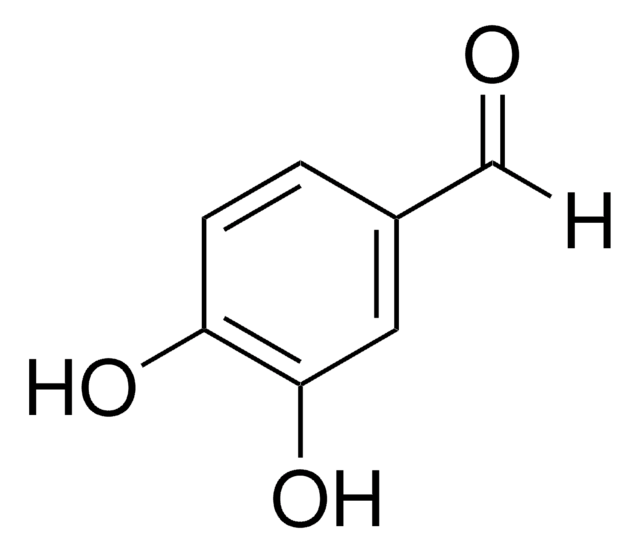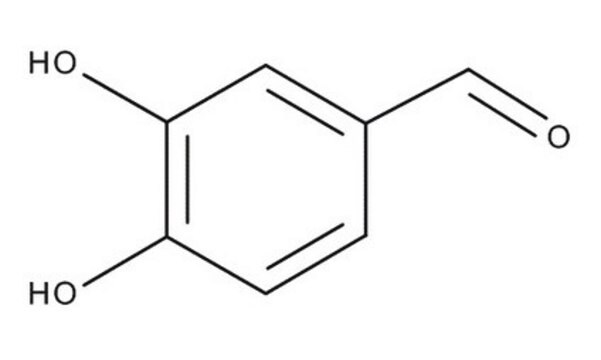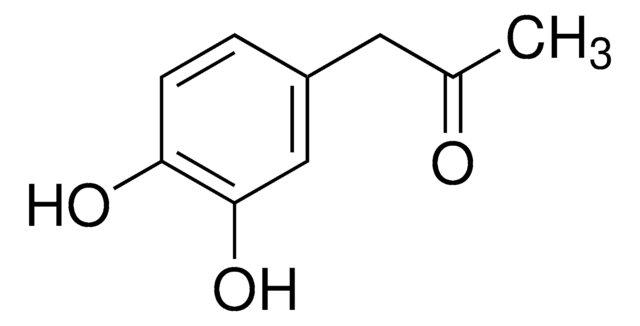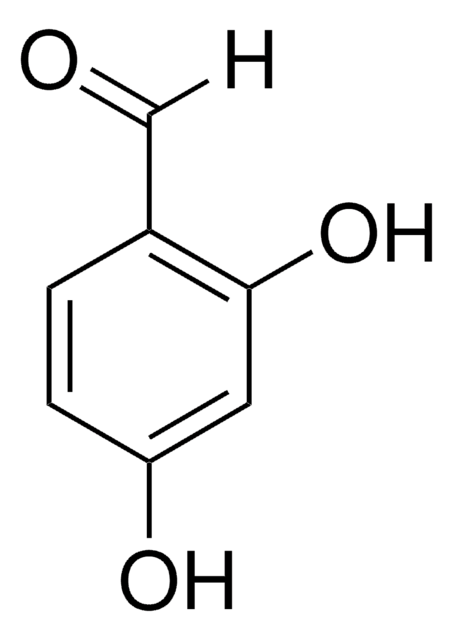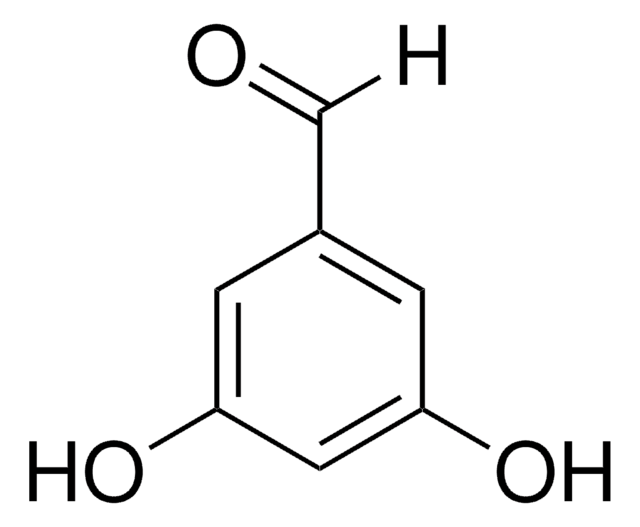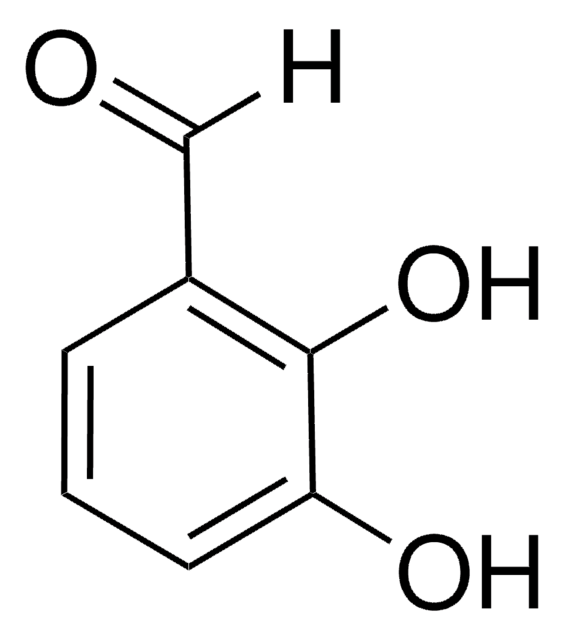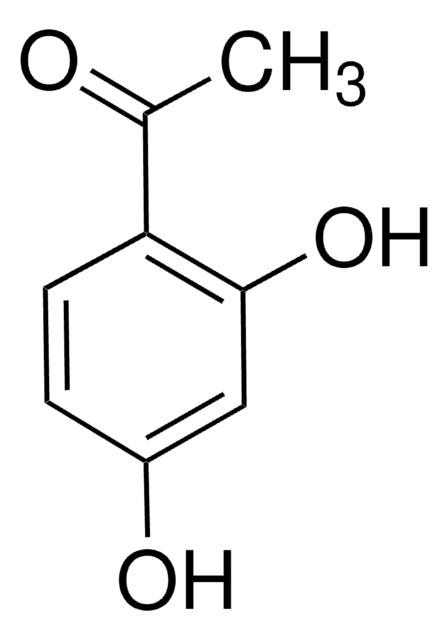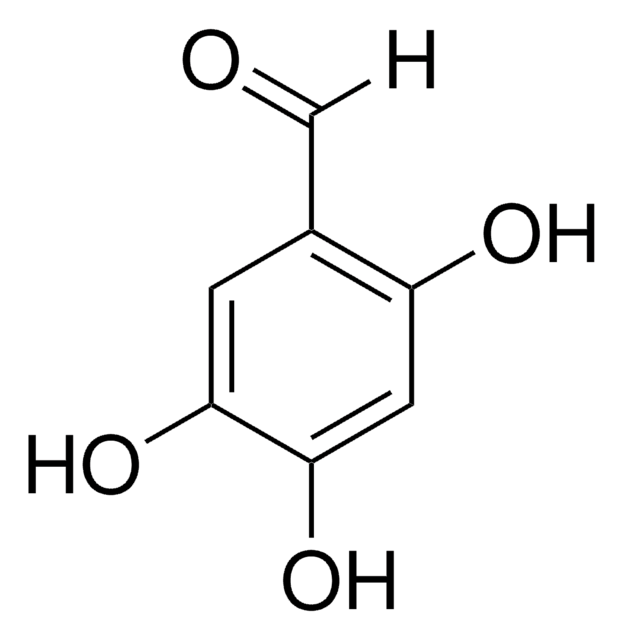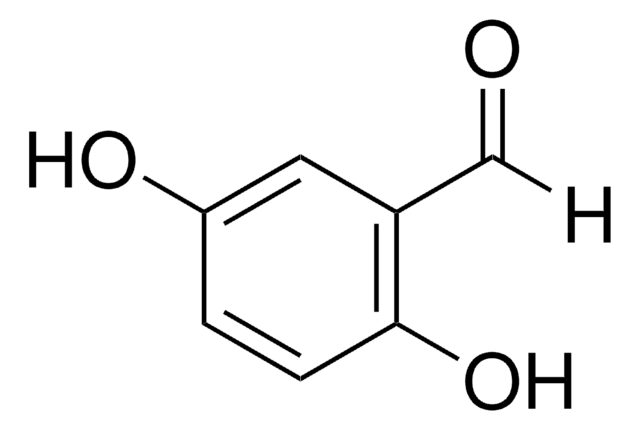37520
3,4-Dihydroxybenzaldehyde
purum, ≥97.0% (HPLC)
Sinonimo/i:
Protocatechualdehyde
Autenticatiper visualizzare i prezzi riservati alla tua organizzazione & contrattuali
About This Item
Formula condensata:
(HO)2C6H3CHO
Numero CAS:
Peso molecolare:
138.12
Beilstein:
774381
Numero CE:
Numero MDL:
Codice UNSPSC:
12352100
ID PubChem:
NACRES:
NA.22
Prodotti consigliati
Grado
purum
Livello qualitativo
Saggio
≥97.0% (HPLC)
Forma fisica
powder
Punto di fusione
150-155 °C
150-157 °C (lit.)
Stringa SMILE
Oc1ccc(C=O)cc1O
InChI
1S/C7H6O3/c8-4-5-1-2-6(9)7(10)3-5/h1-4,9-10H
IBGBGRVKPALMCQ-UHFFFAOYSA-N
Cerchi prodotti simili? Visita Guida al confronto tra prodotti
Categorie correlate
Descrizione generale
3,4-Dihydroxybenzaldehyde has been recognized as one of the antifungal compound extracted from the outer skin of green Cavendish bananas. It can be synthesized from catechol via Fries rearrangement.
3,4-Dihydroxybenzaldehyde is reported as bioactive compound which inhibits the H2O2-induced apoptosis of granulosa cells. Oxidation of 3,4-dihydroxybenzaldehyde on glassy carbon electrodes is reported to afford stable redox-active electropolymerized films containing a quinone moity.
Applicazioni
3,4-Dihydroxybenzaldehyde (Protocatechualdehyde) may be employed as starting reagent for the synthesis of 4-vinylbenzocrown ether.
3,4-Dihydroxybenzaldehyde may be used for the surface modification of nanocrystalline TiO2 particles. Electrodeposited layer of 3,4-dihydroxybenzaldehyde may be used as effective redox mediator during oxidation of NADH at graphene. It may be used in the preparation of new diSchiff base ligands, which forms di-, tri- and tetranuclear Co(II) and Cu(II) complexes.
Avvertenze
Warning
Indicazioni di pericolo
Consigli di prudenza
Classi di pericolo
Eye Irrit. 2 - Skin Irrit. 2 - STOT SE 3
Organi bersaglio
Respiratory system
Codice della classe di stoccaggio
11 - Combustible Solids
Classe di pericolosità dell'acqua (WGK)
WGK 3
Punto d’infiammabilità (°F)
Not applicable
Punto d’infiammabilità (°C)
Not applicable
Dispositivi di protezione individuale
dust mask type N95 (US), Eyeshields, Gloves
Choose from one of the most recent versions:
Possiedi già questo prodotto?
I documenti relativi ai prodotti acquistati recentemente sono disponibili nell’Archivio dei documenti.
I clienti hanno visto anche
3, 4-dihydroxybenzaldehyde, a fungistatic substance from green Cavendish bananas.
Mulvena D, et al.
Phytochemistry, 8(2), 393-395 (1969)
Nicole L Ritzert et al.
Faraday discussions, 172, 27-45 (2014-11-27)
Over the past decade, there has been a great deal of interest in graphene with regards to its electrochemical behavior. Previous studies have focused on understanding fundamental processes such as charge transfer and molecular transport at the graphene-electrolyte interface as
Tatjana D Savić et al.
Physical chemistry chemical physics : PCCP, 16(38), 20796-20805 (2014-08-29)
The surface modification of nanocrystalline TiO2 particles (45 Å) with catecholate-type ligands having different electron donating/electron withdrawing substituent groups, specifically 3-methylcatechol, 4-methylcatechol, 3-methoxycatechol, 3,4-dihydroxybenzaldehyde and 4-nitrocatechol, was found to alter the optical properties of nanoparticles in a similar way to
Ahlam Jameel Abdulghani et al.
Bioinorganic chemistry and applications, 2013, 219356-219356 (2014-01-24)
A series of new di-, tri-, and tetranuclear Co(II) and Cu(II) complexes of three new diSchiff base ligands were synthesized by two different methods. The first method involved the synthesis of the three ligands from condensation reaction of 3,4-dihydroxybenzaldehyde (L'H2)
Ting Xie et al.
PeerJ, 7, e7690-e7690 (2019-10-03)
Lecanicillium lecanii is an entomopathogenic fungi, which was isolated from insects suffering from disease. Now, it is an effective bio-control resource that can control agricultural pests such as whitefly and aphids. There are many studies on the control of various
Il team dei nostri ricercatori vanta grande esperienza in tutte le aree della ricerca quali Life Science, scienza dei materiali, sintesi chimica, cromatografia, discipline analitiche, ecc..
Contatta l'Assistenza Tecnica.